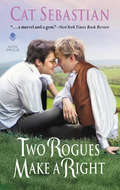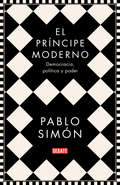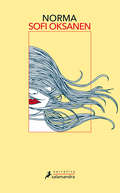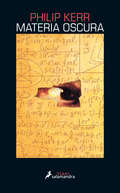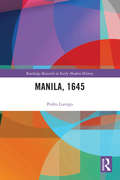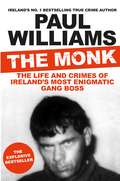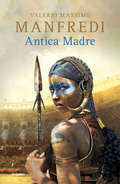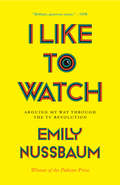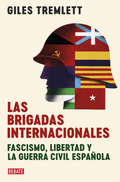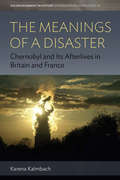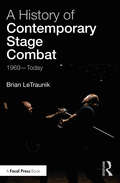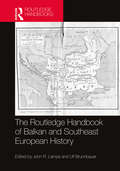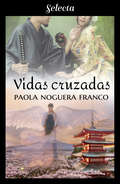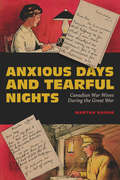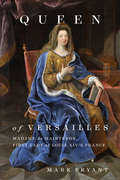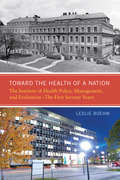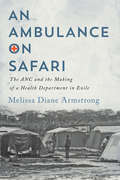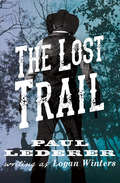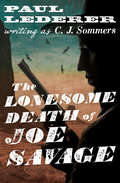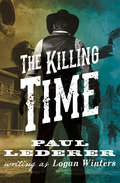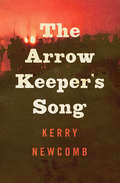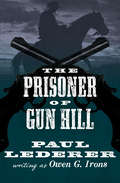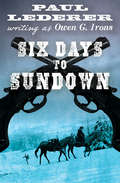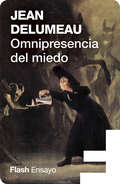- Table View
- List View
Two Rogues Make a Right: Seducing the Sedgwicks (Seducing the Sedgwicks #3)
by Cat SebastianWill Sedgwick can’t believe that after months of searching for his oldest friend, Martin Easterbrook is found hiding in an attic like a gothic nightmare. Intent on nursing Martin back to health, Will kindly kidnaps him and takes him to the countryside to recover, well away from the world. Martin doesn’t much care where he is or even how he got there. He’s much more concerned that the man he’s loved his entire life is currently waiting on him hand and foot, feeding him soup and making him tea. Martin knows he’s a lost cause, one he doesn’t want Will to waste his life on. As a lifetime of love transforms into a tender passion both men always desired but neither expected, can they envision a life free from the restrictions of the past, a life with each other?
Rightfully Ours: How Women Won the Vote, 21 Activities (For Kids series)
by Kerrie HollihanThough the Declaration of Independence stated that "all men are created equal," married women and girls in the early days of the United States had few rights. For better or worse, their lives were controlled by their husbands and fathers. Married women could not own property, and few girls were educated beyond reading and simple math. Women could not work as doctors, lawyers, or in the ministry. Not one woman could vote, but that would change with the tireless efforts of Lucretia Mott, Lucy Stone, Elizabeth Cady Stanton, Sojourner Truth, Susan B. Anthony, Carrie Chapman Catt, Jeannette Rankin, Alice Paul, and thousands of women across the nation. Rightfully Ours tells of the century-long struggle for woman suffrage in the United States, a movement that began alongside the abolitionist cause and continued through the ratification of the 19th amendment. In addition to its lively narrative, this history includes a time line, online resources, and hands-on activities that will give readers a sense of everyday lives of the suffragists. Children will create a banner for suffrage, host a Victorian tea, feel what it was like to wear a corset, and more. And through it all, readers will gain a richer appreciation for women who secured the right to fully participate in American democracy--and why they must never take that right for granted. Kerrie Logan Hollihan is the author of Isaac Newton and Physics for Kids, Theodore Roosevelt for Kids, and Elizabeth I, The People's Queen. She lives in Blue Ash, Ohio.
El príncipe moderno: Democracia, política y poder
by Pablo Simón¿Cómo podemos entender la política para así poder obrar como consejeros del Príncipe? Una introducción al descompuesto y desorientador panorama de la política actual. La crisis económica ha acelerado el ritmo de los cambios políticos en todo el mundo: mayor imprevisibilidad electoral, regresiones autoritarias, surgimiento de nuevos partidos, dificultades para formar gobierno o aumento de las tensiones territoriales, todas ellas cuestiones al orden del día. Esta aceleración ha hecho que cada vez haya ganado más espacio en el debate público una figura hasta ahora ignorada: el politólogo. Este libro tiene por objeto reivindicar su papel y presentar modestamente lo que la ciencia política empírica puede aportar a este tiempo de cambios. Con guiños a la obra clásica de Nicolás Maquiavelo, El príncipe moderno hace una revisión de la agenda política contemporánea. El origen del Estado y el papel de la globalización, los ejes fundamentales de la democracia y su organización institucional, el destino de los nuevos y viejos partidos o el devenir de nuestros Estados de bienestar son algunas de las cuestiones revisadas. Muchas de ellas aún están abiertas, pero constituyen el mejor ejemplo para reivindicar la importancia de esta disciplina como un instrumento útil para entender mejor los cimientos de la política actual.
Norma: A Novel
by Sofi OksanenCon su narrativa intensamente evocadora, Sofi Oksanen se ha convertido en una de las principales voces de su generación. Tras irrumpir en el panorama literario internacional con Purga, que vendió más de un millón de ejemplares en más de cuarenta países y recibió el aplauso unánime de los lectores y la crítica, además de numerosos premios y honores, Sofi Oksanen, una de las principales voces de la narrativa finlandesa actual, vuelve a sorprendernos con Norma, una novela intensa y asombrosa que combina con gran eficacia la intriga, el realismo mágico y la crítica social. Cuando el cuerpo de Anita Ross es encontrado en el metro de Helsinki, todos los temores se confirman: la mujer acaba de tirarse a las vías. Pero Norma, su única hija, se muestra incrédula, ya que madre jamás la hubiera dejado sola con su secreto: sus cabellos viven, experimentan emociones, cobran impulso y crecen tan rápidamente que hay que cortarlos varias veces al día. Dispuesta a todo con tal de saber la verdad, la joven decide reconstruir los últimos días de su madre, ofreciéndose incluso en el salón de belleza donde ella trabajaba, uno más de los negocios de un clan que también trafica con vientres de alquiler. Acechada por el pasado y atrapada en una maraña de engaños y explotación, Norma deberá luchar por esclarecer los hechos y alcanzar la libertad. Con una prosa imaginativa, sugerente y poética, Sofi Oksanen urde una trama inquietante sobre las redes mafiosas que se aprovechan de las mujeres, en una novela radicalmente original que va marcando su propio camino a medida que Norma Ross se sumerge en el pasado en busca de su futuro.
Materia oscura
by Philip KerrUn absorbente thriller histórico sobre política, ciencia y religión en el Londres de finales del siglo XVII por uno de los autores más icónicos del género negro. En 1696, Christopher Ellis, un impetuoso joven aficionado a los naipes y a las mujeres, es enviado a la Torre de Londres, pero no como prisionero. Gracias a un inesperado giro del destino, Ellis se convierte en el nuevo ayudante de sir Isaac Newton, el renombrado científico que es además el encargado de perseguir a los falsificadores que amenazan con derrumbar la economía inglesa. Con la aguda perspicacia de Newton y la habilidad de Ellis con la espada, la peculiar pareja de detectives se prepara para resolver el caso. Sin embargo, cuando sus pesquisas los conducen hasta un misterioso mensaje codificado sobre un cadáver escondido en la Torre de los Leones, los dos investigadores se darán cuenta de que se está urdiendo algo mucho más siniestro.
Manila, 1645
by Pedro LuengoManila, 1645 reconstructs what the city of Manila was like before the earthquakes of the mid-seventeenth century. The book demonstrates the importance of addressing the history of Southeast Asia as a multi-layered framework, rather than a series of entangled histories. In doing so, Manila is contextualized not merely as a Spanish settlement connected to New Spain via America, but instead within Southeast Asia, situated between the Chinese and the Sulú Seas, and located in the centre of commercial routes used by Armenian, Dutch, and Portuguese traders. This historical and geographical context is crucial to understanding later cultural dialogues. Urban planning, housing and architecture, and social networks in the city are also examined. The book will appeal to students and scholars interested in early modern history, global history and architectural history.
The Monk: The Life and Crimes of Ireland's Most Enigmatic Gang Boss
by Paul WilliamsOn the streets of the tough Dublin inner-city neighbourhood where he grew up, Gerry Hutch was perceived as an ordinary decent criminal, a quintessential Robin Hood figure who fought the law - and won. To the rest of the world he was an elusive criminal godfather called the Monk: an enigmatic criminal mastermind and the hunted leader of one side in the deadliest gangland feud in Irish criminal history.The latest book from Ireland's leading crime writer Paul Williams reveals the inside story of Hutch's war with former allies the Kinahan cartel, and how the once untouchable crime boss became a fugitive on the run from the law and the mob - with a €1 million bounty on his head.The Monk is an enthralling account of the rise and fall of a modern-day gangster, charting the violent journey of an impoverished kid from the ghetto to the top tier of gangland - until it all went wrong.
Antica Madre
by Valerio Massimo ManfrediLa mítica expedición a las fuentes del Nilo en la Roma imperial de Nerón. Numidia, año 62 d.C. El centurión veterano de guerra Furio Voreno encabeza la escolta de una caravana en cuyos carros viajan animales salvajes y seres humanos capturados para luchar en las arenas de la Roma imperial. Entre los cautivos hay una joven llamada Varea. Es orgullosa y salvaje como un felino, puede comunicarse con los animales y Voreno la observa, fascinado. Los retratos de la joven que el pintor de paisajes ha realizado durante el viaje despiertan el interés del emperador por Varea, que al ser rechazado por la chica la envía a la arena. Mientras tanto, Roma se prepara para una de las mayores expediciones de su historia: el emperador Nerón, a sugerencia de su consejero el filósofo Séneca, planea remontar el Nilo en busca de sus fuentes. Será un viaje más allá de los límites del mundo conocido, una gran maniobra militar que extenderá los dominios del imperio. Voreno y Varea participarán en ella. Reseñas:«Cada nuevo libro de Manfredi es sinónimo de acción intensa y fascinante, aventuras de amor y de guerra, sin perder nunca de vista la Historia con mayúsculas.»Giornale di Brescia «La nueva novela de Valerio Massimo Manfredi. Un viaje a Numidia lleva a la captura de una amazona tan bella y fiera como peligrosa, que el centurión Voreno decide salvar.»Il Messaggero «La expedición de Nerón y la guerrera-leopardo.»Il Messaggero «Un relato inspirado en los escritos de Séneca y otros autores.»Giornale di Brescia
I Like to Watch: Arguing My Way Through the TV Revolution
by Emily NussbaumFrom The New Yorker’s fiercely original, Pulitzer Prize-winning culture critic, a provocative collection of new and previously published essays arguing that we are what we watch.“Emily Nussbaum is the perfect critic—smart, engaging, funny, generous, and insightful.”—David Grann, author of Killers of the Flower Moon From her creation of the “Approval Matrix” in New York magazine in 2004 to her Pulitzer Prize–winning columns for The New Yorker, Emily Nussbaum has argued for a new way of looking at TV. In this collection, including two never-before-published essays, Nussbaum writes about her passion for television, beginning with Buffy the Vampire Slayer, the show that set her on a fresh intellectual path. She explores the rise of the female screw-up, how fans warp the shows they love, the messy power of sexual violence on TV, and the year that jokes helped elect a reality-television president. There are three big profiles of television showrunners—Kenya Barris, Jenji Kohan, and Ryan Murphy—as well as examinations of the legacies of Norman Lear and Joan Rivers. The book also includes a major new essay written during the year of #MeToo, wrestling with the question of what to do when the artist you love is a monster.More than a collection of reviews, the book makes a case for toppling the status anxiety that has long haunted the “idiot box,” even as it transformed. Through it all, Nussbaum recounts her fervent search, over fifteen years, for a new kind of criticism, one that resists the false hierarchy that elevates one kind of culture (violent, dramatic, gritty) over another (joyful, funny, stylized). I Like to Watch traces her own struggle to punch through stifling notions of “prestige television,” searching for a more expansive, more embracing vision of artistic ambition—one that acknowledges many types of beauty and complexity and opens to more varied voices. It’s a book that celebrates television as television, even as each year warps the definition of just what that might mean.Advance praise for I Like to Watch“This collection, including some powerful new work, proves once and for all that there’s no better American critic of anything than Emily Nussbaum. But I Like to Watch turns out to be even greater than the sum of its brilliant parts—it’s the most incisive, intimate, entertaining, authoritative guide to the shows of this golden television age.”—Kurt Andersen, author of Fantasyland“Reading Emily Nussbaum makes us smarter not just about what we watch, but about how we live, what we love, and who we are. I Like to Watch is a joy.”—Rebecca Traister
Las brigadas internacionales: Fascismo, libertad y la guerra civil española
by Giles TremlettLa primera historia completa de las Brigadas Internacionales, un episodio épico, repleto de sangre e ideales, en la lucha contra el fascismo. La Guerra Civil española fue el primer conflicto armado contra el fascismo, y un símbolo para toda una generación. Más de treinta y cinco mil voluntarios de sesenta países acudieron a defender la democracia de las tropas de Franco, Hitler y Mussolini.Desorganizados y mal equipados, pero animados por una ilusión compartida y el ansia de gloria, grupos heterogéneos de jóvenes idealistas, hombres y mujeres, se unieron para crear una ejército voluntario de un tamaño nunca visto desde las Cruzadas: las Brigadas Internacionales. Estos apasionados combatientes por la libertad venían de toda Europa, de China, de África y del continente americano para unirse a la causa de la República y luchar durante dos años en las sangrientas batallas de Madrid, el Jarama y el Ebro. ¿Fueron héroes o ilusos? ¿Santos laicos o aventureros sanguinarios? ¿Y qué lograron exactamente? Esta historia se ha contado en los libros de Orwell, Malraux y Hemingway, los cuadros de Picasso y las fotos de Capa y Taro, pero en esta obra magistral el premiado historiador Giles Tremlett cuenta por primera vez los hechos de la Guerra Civil a través de las experiencias de este extraordinario grupo humano. A partir de los amplios archivos de las Brigadas en Moscú, los documentos de la Comintern e infinidad de testimonios de primera mano, Tremlett logra reflejar el drama y la pasión del heroico esfuerzo por detener al fascismo en Europa. Reseñas:«La valentía y el sacrificio de los voluntarios que acudieron a España de todas partes del mundo para combatir el fascismo siguen despertando el interés por la Guerra Civil. Muchos de los miles de libros sobre el conflicto son sobre las Brigadas Internacionales, pero no hay ninguno como la crónica, tan emocionante como ilustrativa,de Giles Tremlett. Llena de citas y anécdotas memorables, supone, en una prosa viva y brillante, la historia completa de las Brigadas que se echaba en falta.»Paul Preston «La primera historia completa de las Brigadas Internacionales, de una erudición destacable, pero de lectura ágil y amena.»Book of the Day, The Guardian «Magnífico. Historia narrativa en su forma más vívida y convincente.»Fergal Keane
The Meanings of a Disaster: Chernobyl and Its Afterlives in Britain and France (Environment in History: International Perspectives #20)
by Karena KalmbachThe disaster at the Chernobyl nuclear power plant was an event of obviously transnational significance—not only in the airborne particulates it deposited across the Northern hemisphere, but in the political and social repercussions it set off well beyond the Soviet bloc. Focusing on the cases of Great Britain and France, this innovative study explores the discourses and narratives that arose in the wake of the incident among both state and nonstate actors. It gives a thorough account of the stereotypes, framings, and “othering” strategies that shaped Western European nations’ responses to the disaster, and of their efforts to come to terms with its long-term consequences up to the present day.
A History of Contemporary Stage Combat: 1969 - Today
by Brian LeTraunikA History of Contemporary Stage Combat chronicles the development of stage combat from the origins of the Society of British Fight Directors in 1969 to the modern day. Featuring interviews with some of the pioneers of this art form, the book analyzes how stage combat developed in response to the needs of the industry and the changing social mores in the United States, United Kingdom, Canada, the European Continent, Australia, and New Zealand. It also explores the quality of theatrical weaponry, as well as outcropping of stage combat such as intimacy design and theatrical jousting. A History of Contemporary Stage Combat is an excellent resource for actors, directors, stage combatants, theatre historians, and anyone with a love of action on stage and film.
The Routledge Handbook of Balkan and Southeast European History
by Lampe, John R. / Brunnbauer, UlfDisentangling a controversial history of turmoil and progress, this Handbook provides essential guidance through the complex past of a region that was previously known as the Balkans but is now better known as Southeastern Europe. It gathers 47 international scholars and researchers from the region. They stand back from the premodern claims and recent controversies stirred by the wars of Yugoslavia’s dissolution. Parts I and II explore shifting early modern divisions among three empires to the national movements and independent states that intruded with Great Power intervention on Ottoman and Habsburg territory in the nineteenth century. Part III traces a full decade of war centered on the First World War, with forced migrations rivalling the great loss of life. Part IV addresses the interwar promise and the later authoritarian politics of five newly independent states: Albania, Bulgaria, Greece, Romania, and Yugoslavia. Separate attention is paid in Part V to the spread of European economic and social features that had begun in the nineteenth century. The Second World War again cost the region dearly in death and destruction and, as noted in Part VI, in interethnic violence. A final set of chapters in Part VII examines postwar and Cold War experiences that varied among the four Communist regimes as well as for non-Communist Greece. Lastly, a brief Epilogue takes the narrative past 1989 into the uncertainties that persist in Yugoslavia’s successor states and its neighbors. Providing fresh analysis from recent scholarship, the brief and accessible chapters of the Handbook address the general reader as well as students and scholars. For further study, each chapter includes a short list of selected readings.
Vidas cruzadas: Hay Amores Destinados A Encontrarse En Esta Vida O En La Otra
by Paola Noguera FrancoPorque hay amores destinados a encontrarse en esta vida o en la otra... Un ángel ha pasado por la ciudad de Ripoll. Parece algo circunstancial cuando se cruza con Alba, una mujer atribulada y con el corazón roto, a la que intenta ayudar desde su posición angélica, como haría con cualquier otra alma adolorida. Sin embargo, pronto se dará cuenta de que, entre él y aquella mujer, hay algo más que una simple coincidencia. ¿Puede el amor traspasar barreras del tiempo y del espacio en pos de un deseo y una promesa? Una conmovedora historia que entrelaza situaciones contemporáneas del Ripoll de tiempos actuales junto con una más oscura y turbulenta del Japón de 1868, en plena Guerra Civil...
Anxious Days and Tearful Nights: Canadian War Wives During the Great War (Carleton Library Series #252)
by Martha HannaWhat was it like to be a soldier's wife in Canada during the First World War? More than 80,000 Canadian women were married to men who left home to fight in the war, and its effects on their lives were transformative and often traumatic. Yet the everyday struggles of Canadian war wives, lived far from the battlefields of France, have remained in the shadows of historical memory. Anxious Days and Tearful Nights highlights how Canadian women's experiences of wartime marital separation resembled and differed from those of their European counterparts. Drawing on the letters of married couples separated by wartime service and the military service records of hundreds of Canadian soldiers, Martha Hanna reveals how couples used correspondence to maintain the routine and the affection of domestic life. She explores how women managed households and budgets, how those with children coped with the challenges of what we today would call single parenthood, and when and why some war wives chose to relocate to Britain to be nearer to their husbands. More than anything else, the life of a war wife - especially a war wife separated from her husband for years on end - was marked and marred by unrelieved psychological stress. Through this close personal lens Hanna reveals a broader picture of how war's effects persist across time and space.
Queen of Versailles: Madame de Maintenon, First Lady of Louis XIV's France
by Mark BryantThe rise to power of Françoise d'Aubigné, Marquise de Maintenon (1635-1719), a queen in all but name, was nothing short of extraordinary. Born into poverty and ignominy, she used her intellect, charisma, and connections to join the ranks of fashionable society, eventually establishing herself at the French court as governess to the legitimized children of Louis XIV. Her relationship with the Sun King gradually flourished, and after the death of the queen in 1683 the couple secretly married. Although their marriage was never made public, Maintenon came to wield unparalleled influence as Louis XIV's closest confidante and most trusted political adviser. The aging king required her daily presence in governmental meetings and relied on her for advice on crown appointments, state business, and policy making. Her modest suite of apartments at Versailles became the heart of the court and she was pursued by officials and dignitaries, popes and princes from across Europe, all anxious to appropriate her influence. She used her expansive social network to intervene in a range of political, religious, and royal family affairs, but not always with the king's knowledge, and her successes were often outweighed by controversy and failure. In Queen of Versailles Mark Bryant explores the remarkable life and court career of Madame de Maintenon. A study in queenship, it reveals how the dynamics of power and gender operated within the realms of early modern high politics, church-state affairs, and international relations while providing unique insights into the Sun King and his court.
Toward the Health of a Nation: The Institute of Health Policy, Management and Evaluation - The First Seventy Years
by Leslie A. BoehmCanadians view their healthcare – recognized throughout the world as an exemplary system – as iconic and integral to their identity. In Toward the Health of a Nation Leslie Boehm recounts the first seventy years in the life of one of the foundations of Canada's healthcare system, the Institute of Health Policy, Management and Evaluation at the University of Toronto. Boehm – a graduate of IHPME, and an instructor there throughout his career – charts the institute's history from its inception in 1947 as the Department of Hospital Administration to the present day. The first program of its kind in Canada, and one of the few in the world, the school was founded at a time when the issue of healthcare was becoming a significant part of national and provincial discussions and policies. Initially concentrating on hospital management and professional degrees, it has expanded to offer academic degrees and facilitate important research into health systems, policies, and outcomes. In Toward the Health of a Nation Boehm demonstrates the excellence of the program, its faculty, and its graduates, as well as their accomplishments in major government initiatives and royal commissions. In the seventy years since IHPME's inception healthcare has grown to become a major part of government and business activity, and it will only increase in coming years. An in-depth history of a major program in graduate health education, Toward the Health of a Nation highlights how important healthcare is to a modern, functional society.
An Ambulance on Safari: The ANC and the Making of a Health Department in Exile (McGill-Queen's/Associated Medical Services Studies in the History of Medicine, Health, and Society #53)
by Melissa Diane ArmstrongDuring the apartheid era, thousands of South African political activists, militants, and refugees fled arrest by crossing into neighbouring southern African countries. Although they had escaped political oppression, many required medical attention during their period of exile. An Ambulance on Safari describes the efforts of the African National Congress (ANC) to deliver emergency healthcare to South African exiles and, in the same stroke, to establish political legitimacy and foster anti-apartheid sentiment on an international stage. Banned in South Africa from 1960 to 1990, the ANC continued its operations underground in anticipation of eventual political victory, styling itself as a "government in waiting." In 1977 it created its own Health Department, which it presented as an alternative medical service and the nucleus of a post-apartheid healthcare system. By publicizing its own democratic policies as well as the racist practices of healthcare delivery in South Africa, the Health Department won international attention for its cause and provoked widespread condemnation of the apartheid state. While the global campaign was unfolding successfully, the department's provision of healthcare on the ground was intermittent as patients confronted a fledgling medical system experiencing various growing pains. Still, the legacy of the department would be long, as many medical professionals who joined the post-apartheid Department of Health in South Africa had been trained in exile during the liberation struggle. With careful attention to both the international publicity campaign and on-the-ground medical efforts, An Ambulance on Safari reveals the intricate and significant political role of the ANC's Health Department and its influence on the anti-apartheid movement.
The Lost Trail
by Paul LedererAfter two years in jail, a cowboy searches for his sweetheartIt's bold for a cowhand to woo his boss's daughter, but John Tanner can't help loving Becky Canasta. Their courtship is upended by Matt Doyle, a spurned admirer who considers Becky to be his property--and is willing to kill to keep it that way. He is about to have his revenge when Becky draws a small pistol and shoots him through the heart. To save her from the gallows, John takes the blame. He receives only two years in prison for his gallantry. Once freed, he returns to the ranch to see if he still holds Becky's favor, but the place is ransacked--and Becky is nowhere to be found. Desperate to save the woman for whom he sacrificed his freedom, John sets off in pursuit of the kidnappers, who are on the trail of a legendary treasure. He must find it first if he ever wants to see Becky alive again.
The Lonesome Death of Joe Savage
by Paul LedererWhile searching for his cousin, a cowpuncher uncovers a dark family secretAfter a hard drive from Texas, cowhand Tracy Keyes finds himself in Abilene, Kansas, with money to burn. A telegram waits from his mother, begging him to go to Wyoming to learn how his cousin, Joe Savage, died. Tracy buys a heavy coat, saddles up, and ventures into the frigid winter to search for truth on frozen ground. The first thing he learns is that Joe Savage was a killer, pursued by lawman and bounty hunter alike. The second is that Joe may not be dead after all.Tracking the desolate countryside for his sinister relation, Tracy finds that everyone in Wyoming had a reason to hate Joe Savage. As he gets closer to unraveling the mystery of his vanished cousin, Tracy knows that he and Joe will be reunited soon--dead or alive.
The Killing Time
by Paul LedererAn out-of-work lawman rides into the hills in search of a runaway killerBefore he draws his gun, Tom Dyce waits for John Bass to shoot first. He plugs the killer in the stomach but doesn't fire again. A marshal's deputy, Tom has never killed a man in cold blood . . . at least, not yet.The confrontation with Bass sours Tom on working for the marshal. Needing a change, he decides to return home to Thibido and the woman he loved long ago, Aurora Tyne. Before he leaves Rincon, the marshal offers him one last assignment: tracking a fugitive bank robber who has fled into the hills outside of Tom's hometown. Though he wants nothing to do with bounty hunting, the reward isn't the only thing that draws him to the chase. Aurora's life is in danger, and saving her may require murder.
The Arrow Keeper's Song
by Kerry NewcombTom Sandcrane must navigate the narrow path between his Cheyenne heritage and the white man's worldFor generations, the Sandcrane men have served their tribe as the keepers of the Sacred Arrows. When the time comes for Seth Sandcrane to pass the responsibility on to his son Tom, he waits with pride for his son to assume his place among the elders of the tribe. But Tom wants nothing to do with Sacred Arrows, ancient traditions, and the mystical heritage of the Cheyenne. It is 1896; the nation is growing, and Tom wants a place in the white man's world.He takes a job in the Bureau of Indian Affairs as a go-between for the government and the Cheyenne. When bureaucratic treachery forces Tom to become an outlaw, he must flee the land of his birth. As America teeters on the brink of the Spanish-American War, Tom Sandcrane will learn to fight--not with sacred arrows, but with a Colt .38.
The Prisoner of Gun Hill
by Paul LedererOn the run from a posse, a killer becomes a slaveWhen Luke Walsh hears Dee Dee Bright calling for help, he breaks down her hotel room door. He finds the dance-hall beauty half-naked underneath a brutish man, and draws his gun without thinking. Suddenly a marshal is dead, and Luke's life isn't worth dirt. He escapes into the desert, but when his water runs dry and his horse drops dead, he prepares for the end. He collapses, only to wake in the back of a stranger's wagon. Taken captive by outlaws, he soon wishes he had not survived.As a slave working in a gold mine, Luke endures a new life of savage discipline in which the only law is death. The worst surprise comes when Dee Dee Bright arrives, flanked by her outlaw lover. The woman who ruined his life is not through with him yet, but Luke Walsh knows how to settle a score.
Six Days to Sundown
by Paul LedererAs winter bears down, a gang of settlers races for their livesCasey Storm doesn't know who the Shadow Riders are. He only knows that they want to kill him. A dozen men in black slickers set upon Casey as soon as he reaches Montana, chasing him across the freezing plains for reasons he can only guess at. They chase him until his horse dies and keep chasing him even after he tumbles to the ground. He escapes only by chance, tripping and falling into a hidden coulee. The Shadow Riders pass on--and a winter storm descends.Thick snow falls as Casey staggers up to the covered wagon, begging for shelter. The inhabitants are also on the run from the Shadow Riders, who seem to have mistaken Casey for Stan Deveraux, the gunman who promised to lead the settlers to safety. They have six days to reach the fabled land known as Sundown--six days before their property is stolen, and they are left to die at the hands of the Shadow Riders.
Omnipresencia del miedo
by Jean DelumeauLa historia del miedo en Occidente. En este ensayo, Jean Delumeau (El miedo en Occidente, Taurus) explora los principales miedos que han marcado la civilización occidental desde la Antigüedad. A través de frases hechas, ritos y la literatura, el autor examina algunos de los terrores más recurrentes. El mar, por ejemplo, se convirtió en el lugar del miedo y en símbolo de locura. La cultura occidental ha estado siempre influida por el terror a lo lejano y a lo próximo, a lo nuevo y a lo viejo. En definitiva, a todo aquello que no se podía entender. «Antiguamente el miedo estaba en todas partes.»
